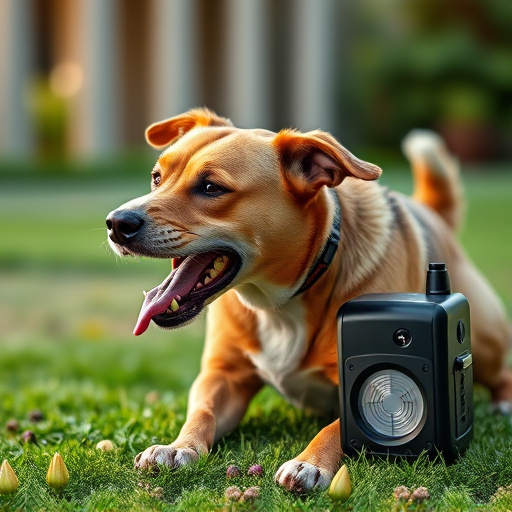“Discover the revolutionary power of safe pet control through sonic technology. This article explores electronic pet deterrents, delving into their functionality, benefits, and diverse applications. From understanding the science behind sonic waves to navigating regulatory considerations for safety, we provide insights for ethical use. Learn how this innovative approach can enhance pet welfare while addressing behavioral issues, all while adhering to critical Electronic Pet Deterrent Safety Regulations.”
- Understanding Electronic Pet Deterrents: How Does Sonic Technology Work?
- Benefits and Applications of Safe Sonic Pet Control
- Regulatory Considerations for Electronic Pet Deterrent Safety
- Implementing Best Practices: Ensuring Ethical and Effective Use of Sonic Technology for Pets
Understanding Electronic Pet Deterrents: How Does Sonic Technology Work?
Electronic pet deterrents, especially those employing sonic technology, have gained popularity as humane alternatives to traditional pest control methods for managing unwanted animals. These devices use sound waves to create an unpleasant experience for the target animal without causing harm. Sonic deterrents emit high-frequency sounds that are inaudible to humans but can be detected by pets, typically triggering a natural aversion response. For instance, some devices simulate the ultrasonic frequencies that many dogs dislike, encouraging them to stay away from treated areas.
The safety and effectiveness of these electronic pet deterrents are governed by various regulations to ensure minimal risk to both pets and humans. These safety measures often include guidelines on sound pressure levels, ensuring they don’t pose a hearing hazard. As technology advances, ongoing research and compliance with safety standards help improve the design and performance of sonic deterrents, making them more precise and less disruptive to non-target species.
Benefits and Applications of Safe Sonic Pet Control
The Benefits and Applications of Safe Sonic Pet Control
Safe sonic pet control technology offers a non-lethal, humane, and environmentally friendly alternative to traditional electronic pet deterrents. By utilizing specific sound frequencies, these devices can effectively train pets to avoid certain areas or behaviors without causing harm or stress. This approach aligns with growing consumer preferences for ethical solutions and stringent electronic pet deterrent safety regulations.
Applications are diverse, ranging from indoor homes where cats or dogs might be scratching furniture or jumping on countertops, to outdoor landscapes where wildlife such as deer or raccoons cause damage. The technology can also be tailored for specific pets, making it versatile for various scenarios. Moreover, safe sonic pet control systems are easy to install and maintain, making them appealing solutions for both homeowners and property managers looking to protect their spaces from unwanted animal visitors.
Regulatory Considerations for Electronic Pet Deterrent Safety
The introduction and widespread adoption of electronic pet deterrents, such as sonic devices designed to keep animals away from specific areas, have brought about both excitement and regulatory scrutiny. While these technologies offer potential solutions for pet owners to control unwanted animal behavior, ensuring their safety and effectiveness is paramount. Therefore, rigorous testing and adherence to established Electronic Pet Deterrent Safety Regulations are crucial steps in the development and marketing of such devices.
Regulatory bodies worldwide have implemented guidelines to safeguard consumers and animals alike. These regulations cover various aspects, including device performance, potential harm to pets, human exposure limits, and product labeling. Manufacturers must conduct thorough research to comprehend the impact of sound waves on different animal species, as well as their own safety standards. Proper testing and certification ensure that electronic pet deterrents are safe, humane, and reliable, fostering consumer trust and confidence in these innovative solutions for managing pet behavior.
Implementing Best Practices: Ensuring Ethical and Effective Use of Sonic Technology for Pets
Sonic technology offers a promising and safe approach to pet control, providing an effective solution without causing harm. As this innovative method gains popularity, adhering to regulatory guidelines for electronic pet deterrents is essential. By combining scientific understanding with ethical considerations, we can ensure these devices are used responsibly, fostering a harmonious coexistence between pets and their environments. Implementing best practices will help maximize the benefits of sonic pet control while upholding safety regulations, making it a viable game-changer in the field of pet care.
